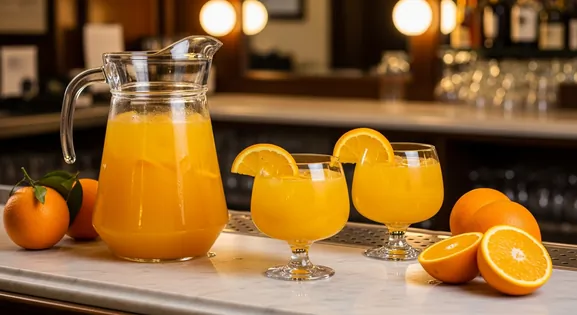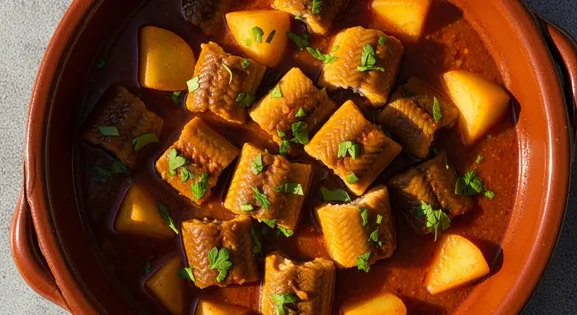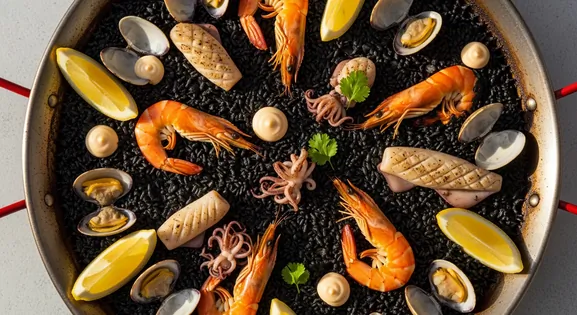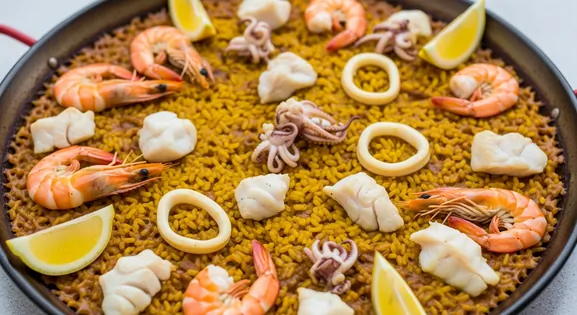
Agua de Valencia (Valencian Water Cocktail)
Agua de ValenciaValencia's iconic, potent cocktail of fresh orange juice, Cava, and spirits.
In Valencia, the aroma of saffron-infused paella mingles with the scent of fresh oranges, inviting you into a culinary world where tradition thrives. This city's food scene is a vibrant tapestry of Mediterranean flavors, from bustling markets to sun-drenched beachside eateries. Prepare to savor the authentic taste of Spain.
Valencia proudly claims the title as the birthplace of Spain's most famous dish, paella. The city's cuisine brilliantly combines fresh Mediterranean ingredients with Moorish influences, creating distinct local specialties. The culinary scene balances respect for tradition with modern innovation, evident in both historic establishments and contemporary gastro-markets.
Join locals for "almuerzo" (mid-morning snack) between 9-11 AM. It's a hearty, affordable meal often including a sandwich, drink, and coffee, perfect for experiencing daily life.
Authentic Valencian paella is traditionally a lunchtime dish, cooked fresh and served between 1:30 PM and 3:30 PM. Many restaurants won't serve it for dinner.
Beyond tourist spots, find traditional horchaterías for the best horchata and fartons. Look for places with long queues of locals, especially in Alboraya.
Guide to finding and enjoying Valencia's signature dish
How to explore Valencia's main food market like a local
Higher temperatures (often exceeding 30°C / 86°F) require extra vigilance with seafood
Traditional outdoor terraces may lack proper refrigeration during extreme heat
City becomes extremely crowded during mid-March festival
Festival specialty foods available from street vendors throughout the city
Valencia's famous oranges feature in special winter/spring menus
Enjoy the peak season for the sweetest, juiciest Valencian oranges directly from growers.
This modernist building houses nearly 400 stalls, offering a vibrant array of fresh produce, meats, and prepared foods. It's a bustling hub for local culinary exploration.
Valencia's oldest neighborhood, El Carmen, offers a charming labyrinth of narrow streets filled with traditional tapas bars and restaurants, blending history with vibrant nightlife.
Along the city's main beach, this district is famous for its large, traditional paella restaurants, offering stunning sea views alongside classic Valencian rice dishes.
Valencia's most bohemian and trendy neighborhood, Ruzafa, is a hub for innovative cuisine, independent cafes, and lively bars, offering a modern take on the city's food scene.
Nestled within the Albufera Natural Park, this village is the true heartland of paella, where traditional rice fields meet rustic restaurants serving authentic, wood-fired versions of the iconic dish.
For authentic paella valenciana, visit restaurants in El Palmar near Albufera lagoon or established places like La Pepica and Casa Carmela along Malvarrosa Beach. Avoid tourist spots that serve 'seafood paella', as true Valencian paella uses rabbit, chicken, and vegetables.
Beyond paella, try fideuà (similar to paella but with noodles), all i pebre (eel stew), esgarraet (roasted peppers with cod), horchata with fartons, and agua de Valencia (citrus cocktail).
Valencia has relatively few street food vendors compared to other European cities. For quality-focused choices, observe established food stalls in Mercado Central, Mercado de Colón, or vendors during major festivals like Fallas, which are subject to health inspections.
Valencia's iconic, potent cocktail of fresh orange juice, Cava, and spirits.
Valencia's iconic eel stew, All-i-pebre, a rich Albufera culinary tradition.
Valencia's rich, black rice dish, a coastal culinary pride.
Valencia's iconic peeled seafood rice, a flavorful and convenient local delight.
At Tasteplorers, our mission is to provide the most accurate and useful travel information in the world. To achieve this, all content on this site is created through our unique editorial framework. We utilize leading AI research tools, guided by our proprietary prompts, and a multi-stage validation process. This entire system is overseen by our editorial team to ensure everything we publish meets our high standards for accuracy, cultural nuance, and practical value for travelers.
Learn more about our Editorial Process and our Mission.
Discover Madrid's best food areas including La Latina, Mercado de San Miguel & Malasaña. Expert local insights, authentic tapas crawls & must-try local dishes.
Discover Seville's best tapas areas including Triana, Alameda de Hércules & Mercado de Triana. Local insights, authentic dishes & when to visit each district.
Navigate Italy's diverse culinary landscape with our expert guide. Discover authentic Italian cuisine from Rome's street food to regional specialties, making informed choices for a great travel experience.
Navigate Spain's vibrant food scene with our expert guide. Discover authentic Spanish cuisine from Barcelona's tapas bars to regional specialties with quality-focused choices.
Discover Europe's diverse culinary landscape, from Mediterranean flavors to hearty Alpine fare. Learn to navigate markets, decode menus, and eat like a local.
Discover the vibrant cuisines of Latin America & the Caribbean. Our expert guide covers everything from Mexican street food to Peruvian ceviche and market tips.
Explore Oceania's diverse food scene. Learn about Polynesian earth ovens, Fijian feasts, and the vibrant café culture of Australia and New Zealand.
Explore Southeast Asia's diverse food cultures from Thailand to Vietnam. Get expert tips on navigating spice levels, choosing quality vendors, and understanding the rich traditions of the region.


